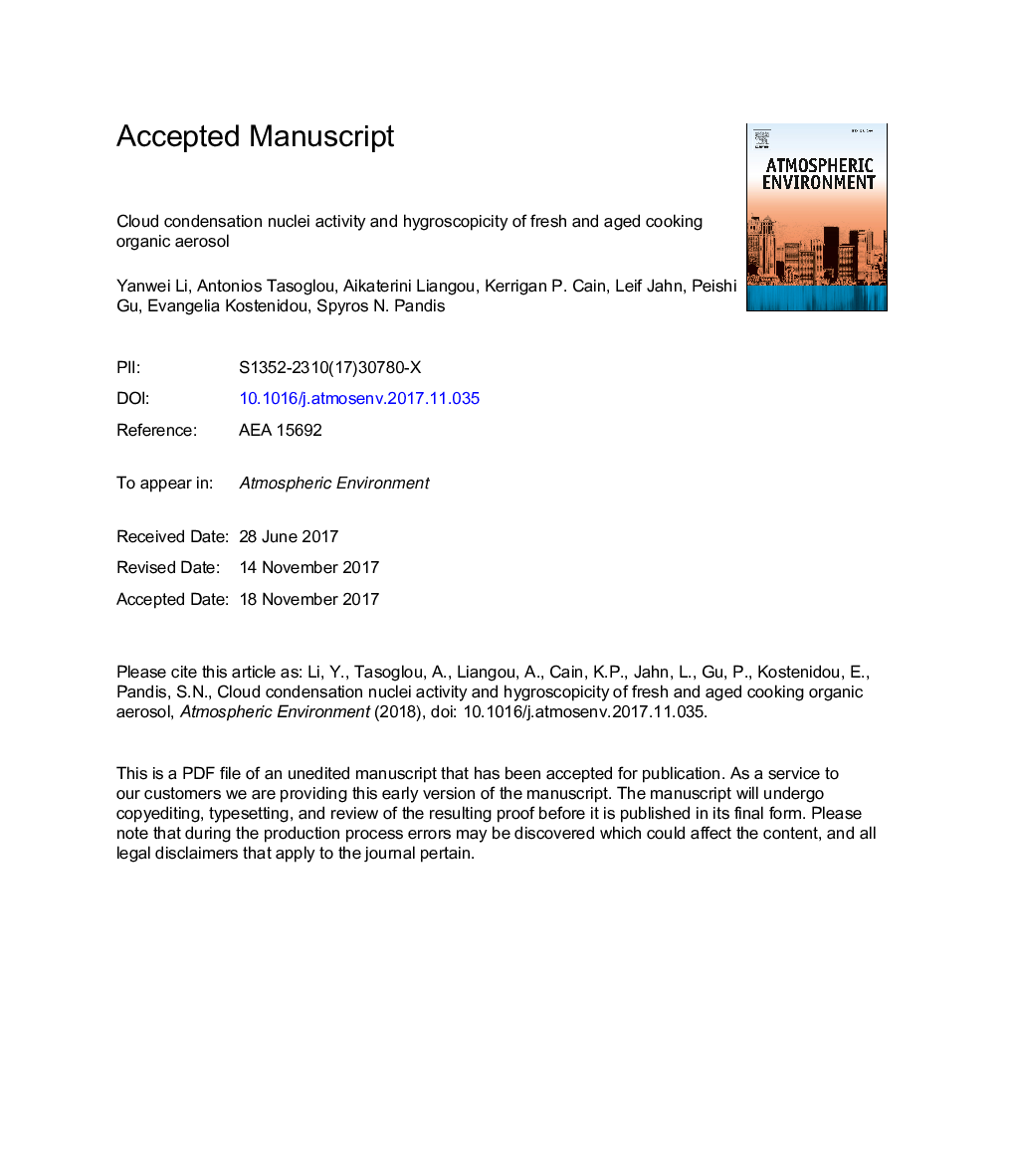| Article ID | Journal | Published Year | Pages | File Type |
|---|---|---|---|---|
| 8864120 | Atmospheric Environment | 2018 | 40 Pages |
Abstract
Cooking organic aerosol (COA) is potentially a significant fraction of organic particulate matter in urban areas. COA chemical aging experiments, using aerosol produced by grilling hamburgers, took place in a smog chamber in the presence of UV light or excess ozone. The water solubility distributions, cloud condensation nuclei (CCN) activity, and corresponding hygroscopicity of fresh and aged COA were measured. The average mobility equivalent activation diameter of the fresh particles at 0.4% supersaturation ranged from 87 to 126 nm and decreased for aged particles, ranging from 65 to 88 nm. Most of the fresh COA had water solubility less than 0.1 g Lâ1, even though the corresponding particles were quite CCN active. After aging, the COA fraction with water solubility greater than 0.1 g Lâ1 increased more than 2 times. Using the extended Köhler theory for multiple partially soluble components in order to predict the measured activation diameters, the COA solubility distribution alone could not explain the CCN activity. Surface tensions less than 30 dyn cmâ1 were required to explain the measured activation diameters. In addition, COA particles appear to not be spherical, which can introduce uncertainties into the corresponding calculations.
Related Topics
Physical Sciences and Engineering
Earth and Planetary Sciences
Atmospheric Science
Authors
Yanwei Li, Antonios Tasoglou, Aikaterini Liangou, Kerrigan P. Cain, Leif Jahn, Peishi Gu, Evangelia Kostenidou, Spyros N. Pandis,
